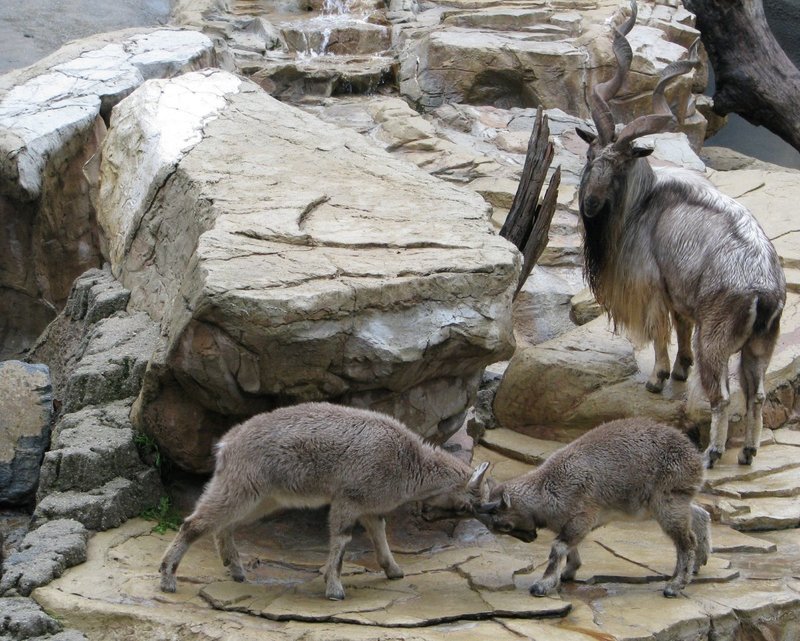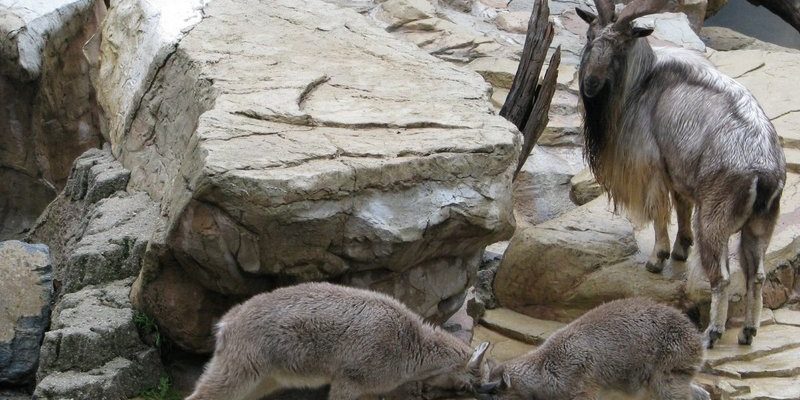
So, what does it actually look like when markhors raise their young in the wild? It’s a unique process, shaped by their habitat, social structure, and even the changing seasons. Let’s take a closer look at how these animals nurture their offspring and the lessons they impart to them in the wild.
The Markhor’s Habitat and Its Challenges
Markhors roam the rugged mountains of Central Asia, specifically in countries like Afghanistan, Pakistan, and India. Their environment is a mixed bag of steep cliffs, rocky outcrops, and sparse vegetation. You might be wondering how such a tough landscape influences how they raise their young.
In this harsh habitat, food can be scarce, and shelter is often hard to find. This makes it crucial for mother markhors to choose the right place to give birth. They typically seek out hidden, rocky crevices that provide safety from predators and harsh weather. Just think of it as finding a cozy nook in a chaotic world—these locations allow the young ones to start life sheltered and secure.
Once the young are born, the sheer challenges of their environment continue. Mother markhors must be vigilant, teaching their kids to navigate the tough terrain and stay alert for potential threats like leopards and wolves. It’s a continuous lesson in survival, blending instinct with maternal care.
Nurturing and Bonding: The First Few Weeks
After giving birth, the bond between the mother and her kid is crucial. During those first few weeks, a lot needs to happen. The mother markhor keeps her newborn close, ensuring it learns the ropes of life in the wild. They’re almost like little sponges, soaking up everything around them.
In the early days, the mother’s role is all about nourishment and protection. She provides milk, which is essential for the kid’s growth. This milk is packed with vital nutrients that help the young one gain strength. While feeding, the mother also keeps a watchful eye, ready to defend her offspring from any lurking threats.
You might find it interesting that bond formation doesn’t just stop at mere survival. Markhor mothers often use gentle nudges and calls to encourage their kids to explore their surroundings. This is essential for developing independence, as it teaches the young ones how to forage for food and recognize safe spaces.
Learning to Forage: The Importance of Nutrition
As the weeks go by, the young markhors begin to transition from relying solely on their mother’s milk to grazing on vegetation. This might seem simple, but learning to forage is a critical skill in their wild upbringing. Mother markhors play a vital role in this education.
You’ll often see mothers lead their young to areas rich in food sources. They teach them what to eat—leaves, flowers, and shrubs—while also demonstrating what to avoid. Imagine a mother teaching her child about healthy eating—it’s similar in the animal kingdom.
During this time, mother markhors instill a sense of caution in their kids. They show them how to graze while staying alert for predators. This means quick, agile movements and an ear perked for any unusual sounds. It’s an ongoing dance of trust and survival.
Playing and Socialization: Building Confidence
Playing is more than just fun for young markhors; it’s a pivotal part of their development. Markhor kids are naturally curious and energetic, and spending time with their mothers allows them to engage in playful behaviors that are crucial for learning social skills.
When young markhors play, they practice essential survival skills, like jumping over rocks or scampering up steep inclines. This is where the bond between mother and child deepens, as mom often joins in on the fun, guiding and encouraging her little one. You could picture them frolicking together, much like a kid and parent playing tag in a park.
Socialization is another key aspect of their upbringing. As they grow, young markhors will interact with other kids in the group, learning how to communicate and establish their place within the social hierarchy. A mother markhor’s presence during these interactions helps shape her kid’s behavior and confidence.
Independence: The Transition to Adulthood
As young markhors approach the age of six months, they start making strides toward independence. It’s a significant time in their lives, and mothers play a crucial role in this transition. During this phase, mothers begin to spend more time away from their kids, allowing them to explore and forage on their own.
However, this doesn’t mean the bond is severed. Mothers remain close enough to ensure their kids are safe while encouraging them to become self-sufficient. It’s a careful balance, kind of like when a parent teaches a teenager how to drive—giving them the freedom to learn while keeping a watchful eye.
Interestingly, markhor mothers are also known to communicate with their young even from a distance. They call out or make specific sounds to guide their kids or alert them to danger. It’s a perfect example of how love and protection evolve as the young ones grow more competent.
The Role of the Herd in Raising Young Markhors
Markhors are social animals, and this social structure plays a crucial role in raising young members. While the mother is the primary caregiver, other females in the herd often assist in nurturing the kids. This communal approach to parenting means that young markhors get extra support and learning opportunities.
You might see multiple young ones playing together under the watchful eyes of several mothers. This not only lightens the load on each individual but also enriches the experience for the kids. They can learn from different adult markhors, picking up various survival skills and social cues.
In times of danger, the herd can band together, providing safety in numbers. It’s like a big family unit where everyone looks out for each other, making the challenges of the wild a bit easier to navigate.
The Cycle of Life: Reproduction and Future Generations
The way markhors raise their young is just the beginning of a much larger cycle of life. Once young markhors have fully matured, they’ll eventually mate and start the process all over again. The knowledge passed down from mother to kid ensures that future generations continue to thrive in their rugged environment.
For every markhor mother, there’s a deep connection to her offspring—a bond that goes beyond just raising them to survive. It’s about passing on skills, knowledge, and the very essence of what it means to be a markhor.
In many ways, it’s a reminder of the beautiful intricacies of nature and how each species, including the markhor, has its own unique story of survival and growth.
In conclusion, watching how markhors raise their young in the wild is a testament to the resilience of nature and the importance of familial bonds. With nurturing care, essential lessons, and a strong social structure, markhors equip their young for the challenges of their environment. By understanding their upbringing, we gain insights into the wild and the connections that sustain life on our planet.

